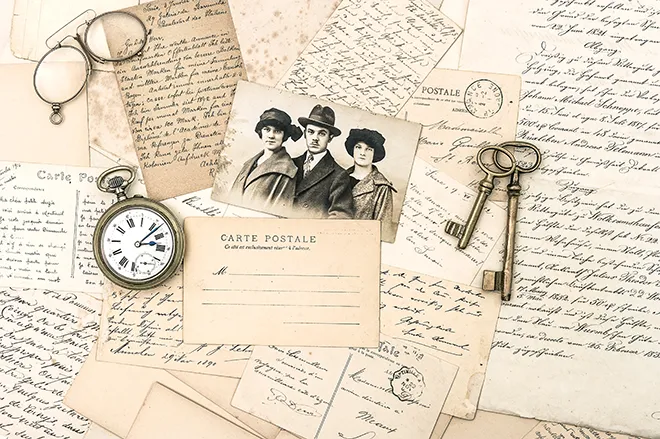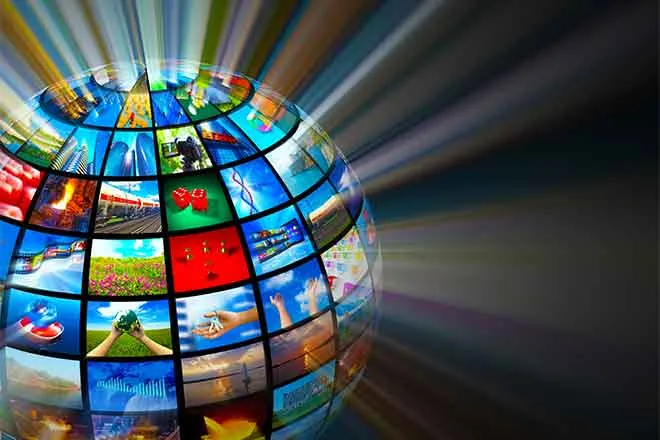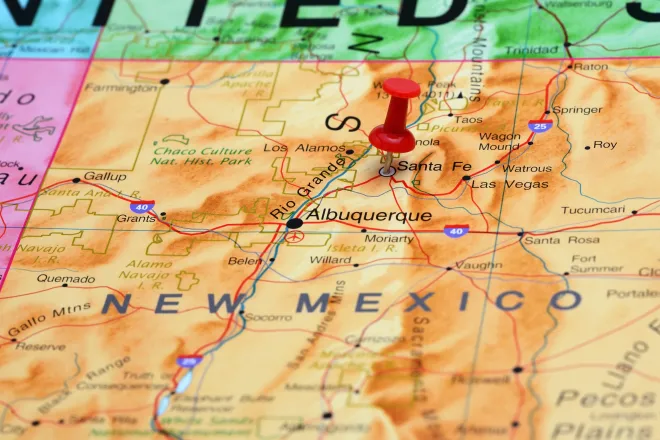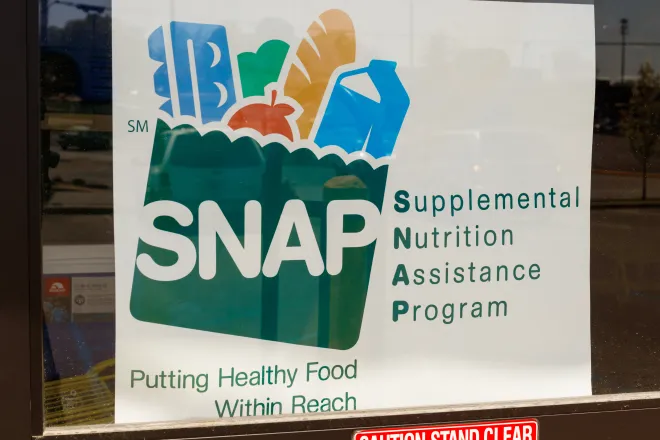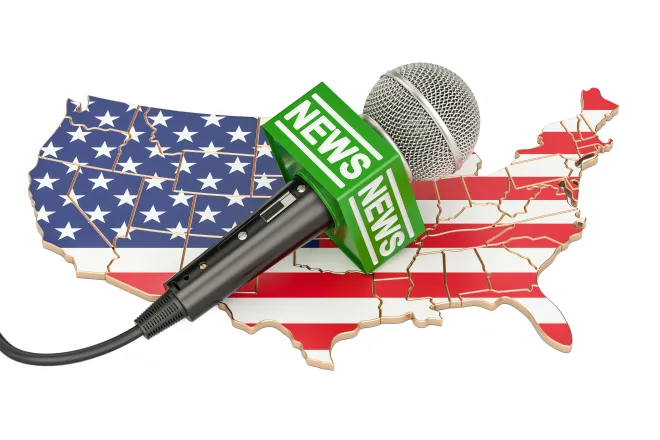
After 25 years of advocacy, a small Navajo community has water
© mheim3011 - iStock-544332118
Three weeks ago, the taps rumbled to life in Thomas Chee’s home. For the first time in his life, water sputtered through his faucet.
“Oh, it was so beautiful,” said 47-year-old Chee on Friday. “Boy, it just hit me. It hit hard, and I just broke down.”
Chee is one of the few dozen residents of Westwater, Utah, a small Navajo community in the southwest corner of the state that for years lacked water and electricity. Chee, who currently serves as the community president, has called Westwater home for his entire life.
He, along with his neighbors, have used outhouses, hauled water with tanks on the back of their trucks, relied on solar electricity and lit kerosene lamps. With his grandmother, Chee would often walk down to a spring in a ravine near his home to get drinking water.
Until now.
For 25 years, residents have been trying to get water. In March, Chee said, “our prayers were answered.”
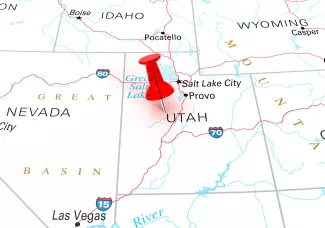
Friday, Westwater residents celebrated alongside Utah Lt. Gov. Deidre Henderson, Navajo Nation President Buu Nygren, Utah GOP Rep. Mike Kennedy and other lawmakers, bureaucrats and tribal leaders.
“As president, my priority has always been water, water, water,” said Nygren, who took office in 2023. “I grew up without running water. I know what it’s like to haul water. I know what it takes, it’s tough, it’s something that our kids and our relatives shouldn’t be going through.”
Bringing water to Westwater was part of a larger, ongoing effort to expand access to water in Navajo communities. Estimates vary, but somewhere between 30% to 40% of homes on the Navajo Nation, the country’s largest Indian reservation, lack running water. That’s despite Lake Powell and the Colorado River, which supplies drinking water to 40 million people across seven states and Mexico, running along the northern border of the reservation.
But those communities are mostly rural, tucked away in some of the most remote parts of the lower 48 states. Westwater is not.
The same ravine where Chee and his family got their drinking water separates Westwater and Blanding, home to about 3,100 people. In minutes, a Westwater resident can get to Blanding’s main street, which has a hospital, a grocery store, a city hall, bank, and a handful of cafes, shops and restaurants. Utah State University’s campus in Blanding is visible from Westwater.
“I was shocked with how close this community was to Blanding,” Henderson told Utah News Dispatch Friday, describing her first visit to Westwater. “This is a community right here, next to a city. So to me, this challenge was something that I felt was worth taking on.”
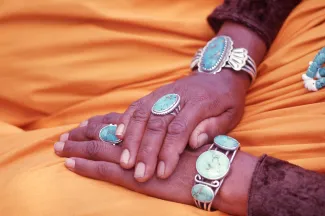
© Rebecca J Becker - iStock-1251580456
Expanding basic utilities to Westwater was less of a logistical issue — which is often the case for the remote communities that dot the Navajo Nation — and more of a jurisdictional issue.
The land has long been home to Navajo families, and was purchased by the Navajo Nation in 1986. However, it’s “fee simple” land, not reservation land, meaning the residents pay taxes to San Juan County. That’s different from untaxed “trust” land, which makes up most American reservations and is under full control of indigenous people.
For 25 years, as Westwater residents lobbied for access to water, they were stuck in jurisdictional limbo, caught between the Navajo Nation, the city, county, and state.
“No one really took ownership, no one took responsibility for the people out here. It wasn’t really the tribe’s responsibility, it wasn’t the county, or the city’s responsibility. So I decided it was the state’s responsibility,” Henderson said.
Henderson, who gave Westwater a shoutout during her inaugural address earlier this year, said she made improving access to water and electricity a priority.
In 2020, the Utah Legislature appropriated $500,000 to electrify Westwater, matched by a $500,000 donation from The Church of Jesus Christ of Latter-day Saints. Two years later, Westwater tied into Blanding’s grid and lights flickered on in the 29 lots that make up the small community. That same year, Blanding struck a deal with the state of Utah, the Navajo Nation, the Navajo Tribal Utility Authority and San Juan County to bring culinary water to Westwater.
The Navajo Nation chipped in $5.5 million, and Utah state leaders allocated $3.5 million in American Rescue Plan funds, the $1.9 trillion economic stimulus package passed by Congress and signed by former President Joe Biden in 2021. Blanding city leaders changed its ordinances to allow for a well to be drilled, and a coalition of nonprofits, with help from the county, helped raise funds and coordinate the project.

© artzenter - iStock-509493427
State officials helped Blanding build an arsenic treatment plant and drill a new well near the spring that divides the city and Westwater. For the last couple years, crews have been building a pipeline into the community.
By late March, every Westwater resident had potable water flowing through their taps.
“This project is a testament to what can happen when people come together,” said Logan Monson, the former mayor of Blanding who now serves as a Republican lawmaker in the Utah House. “It is my hope today that this water project will stand as a symbol, a symbol that every person matters. That every community deserves to be seen.”
Now that the residents have water and electricity, leaders have high hopes for the small city.
“Moving forward, the Westwater community is not going to have those struggles, so that they can focus on some of the things that matter. What else can life provide you when you set yourself up,” Nygren said.
Chee, standing in the creek where he once helped his grandmother bring water back to their home, echoed the Navajo Nation president.
“I believe we will thrive. Life has gotten easier,” he said. “We don’t have to worry about hauling, or looking for water. I believe my community will be more productive.”
Chee spoke over the soft trickle of the spring, pausing as his eyes watered.
“For many years, we relied on this beautiful water right here. It sustained life. Sorry to be emotional, but water is a real precious resource,” he said. “It’s been a long time coming for my people to have this infrastructure.”






